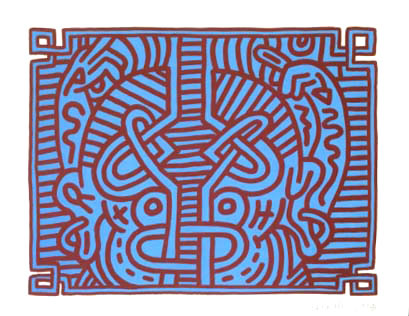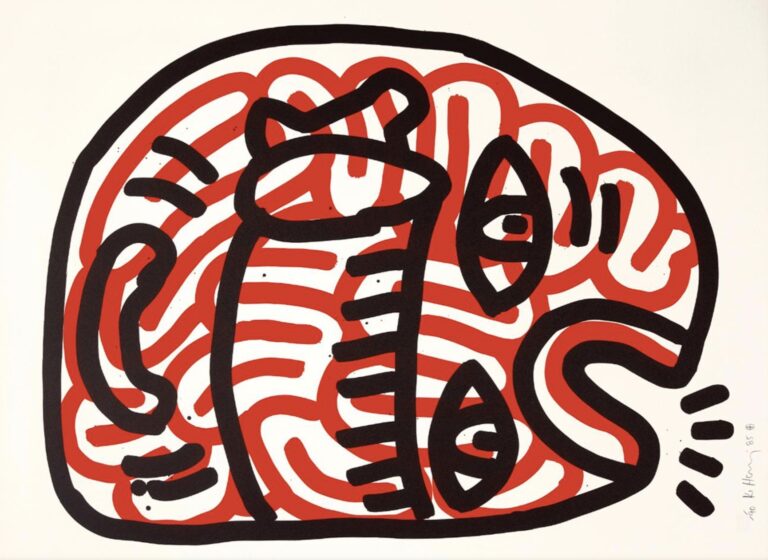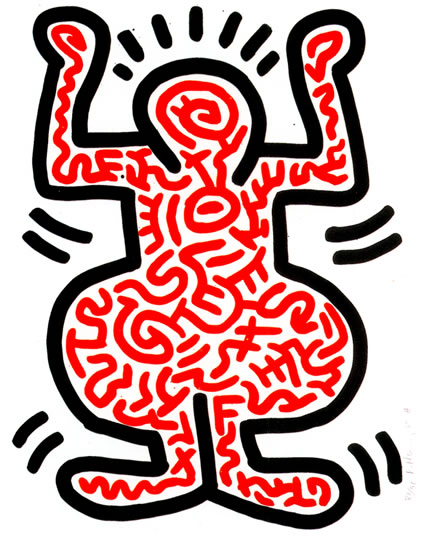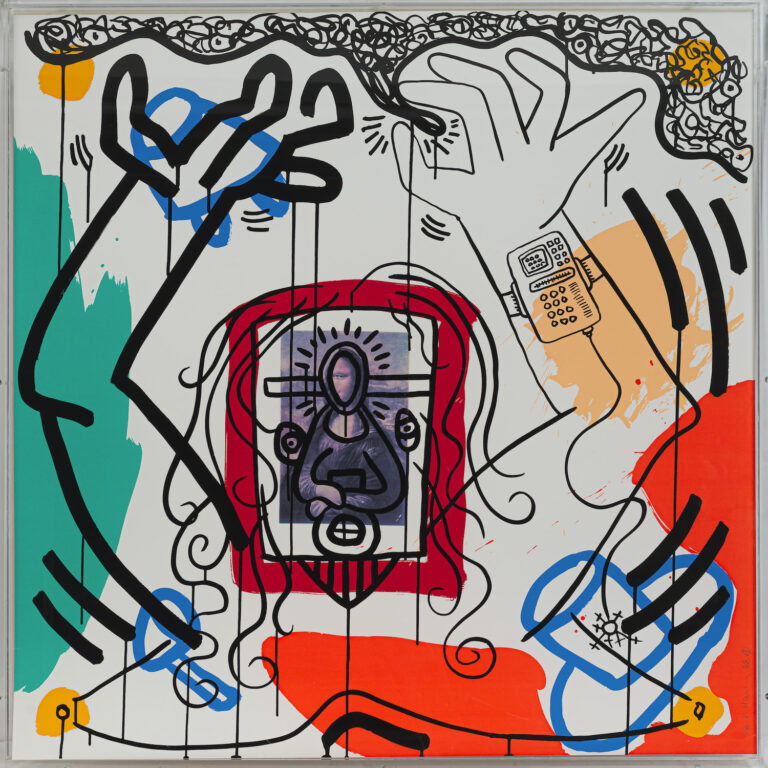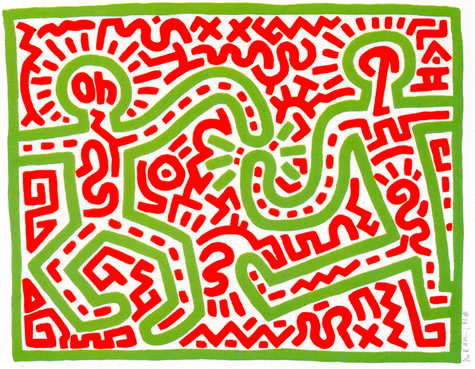Chocolate Buddha #1 is part of the 1989 lithograph series of the same name created by Keith Haring. This eccentric piece contains symmetrical iconography with invigorating depth and meaning. Chocolate Buddha #1 is the first of a five part series that wholly represents themes of mass production and how rampant consumption impacts our culture.
Limbs, objects, and creatures are all prominent in the work, forming complex patterns that reflect motifs of striking colors, and intricate line techniques. In this series, Haring seemed to shift his artistic focus from creating basic subject matter to artworks that are symmetrical and wild. Furthermore, Haring adopted techniques to create realistic works that align with his socio-political beliefs. As a social activist, Keith curated symbols of death and sexuality, specifically within Chocolate Buddha.
Haring’s passion and involvement with activism revealed itself in his artwork, as he was an openly gay man that commented frequently on sexuality, oppression, (safe) sex, and death. Along with these beliefs, Haring imposes varying societal problems within his work that go beyond the topic of sexuality. In the Chocolate Buddha series, each print features a variety of figures that are created to speak on the ubiquitous impacts of modern society and mass media, and how the latter translates to the self-concept adopted by humankind. Intentionally, the sole shapes of a human disintegrate amongst the swirling blue patterns, which are encased by Harings signature thick lines. Chocolate Buddha’s outlined figures are all intertwined in an attempt to mirror a rather seamless, melting nature of the figures, to represent the bonds we form within one another. Haring’s motif mirrors a loss of identity in a crowd, a social commentary on how swiftly one may lose themselves within the confines of society.
The Chocolate Buddha series comments on how capitalism removes the boundary that divides art and consumer objects. As a social activist, Haring’s inspiration for simplistic, colorful techniques stemmed from the graffiti filled, hip-hop blaring energies of the 1970s and 1980s by drawing simple human figures in voluntary movement. As Haring once shared, “See, when I paint, it is an experience that, at its best, is transcending reality” and his statement is clearly depicted in the upbeat surrealistic choices made to create Chocolate Buddha #1. To this day, Haring’s works continue to make the audience feel, think, and transform their perspectives with the swift lithographic printmaking process of a design.
See also: Chocolate Buddha 2, Chocolate Buddha 3, Chocolate Buddha 4, and Chocolate Buddha 5.

